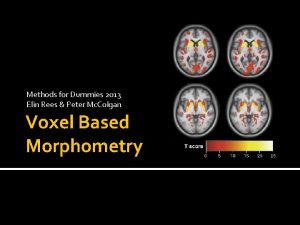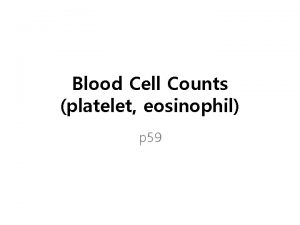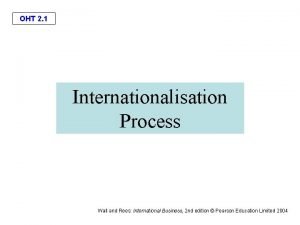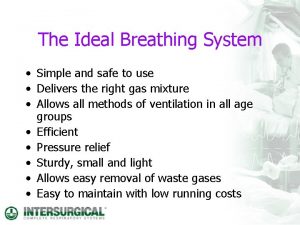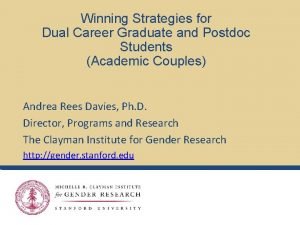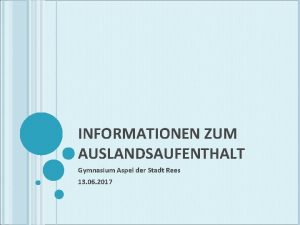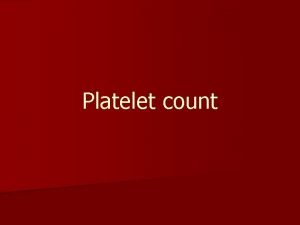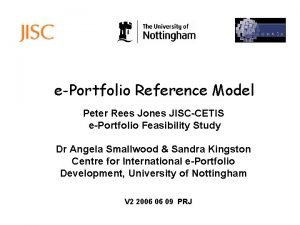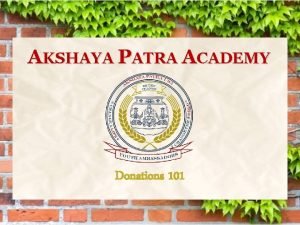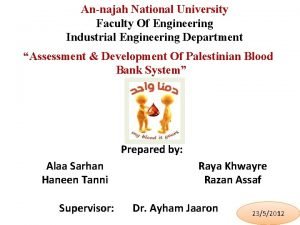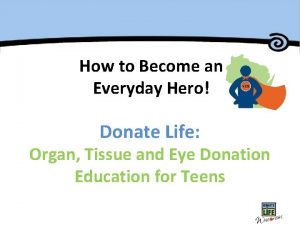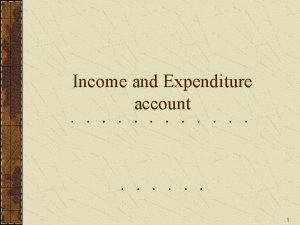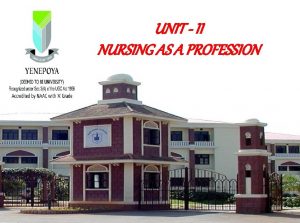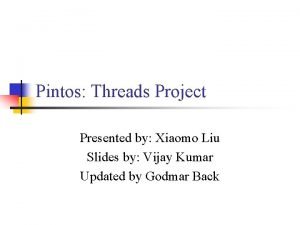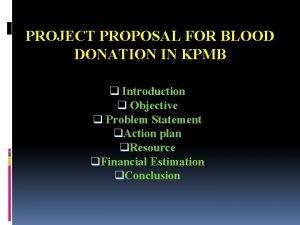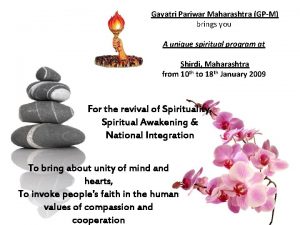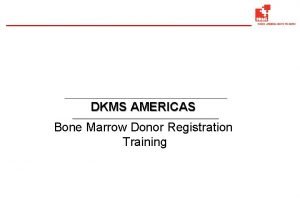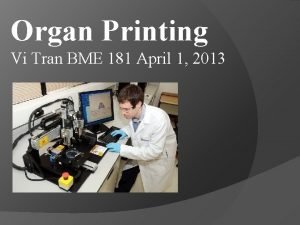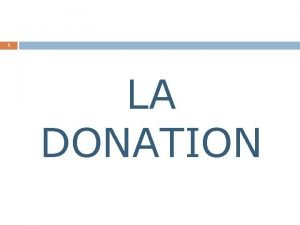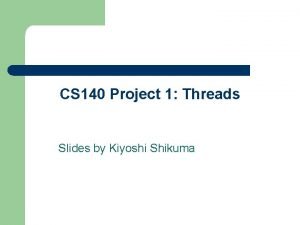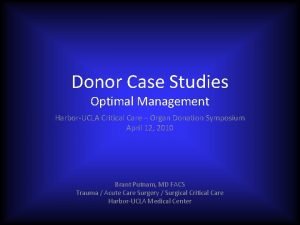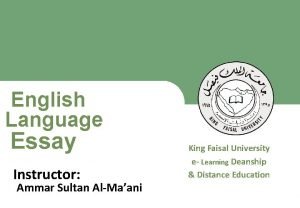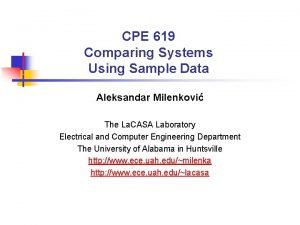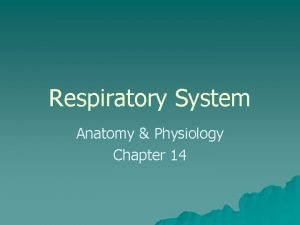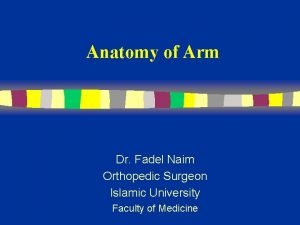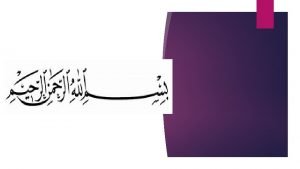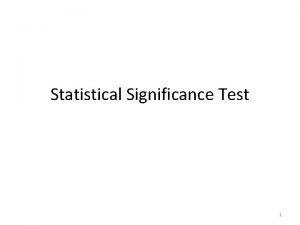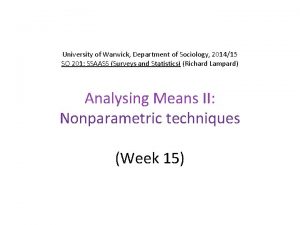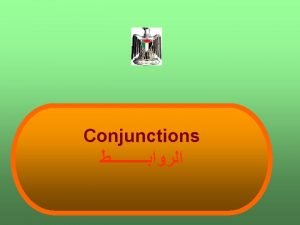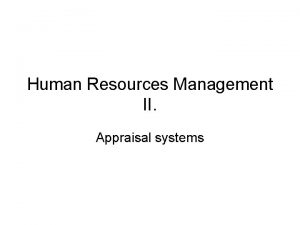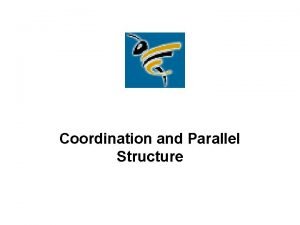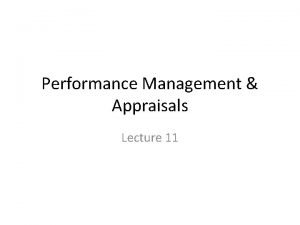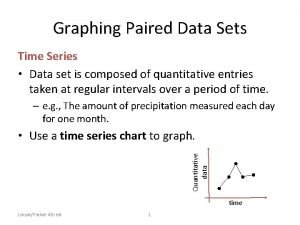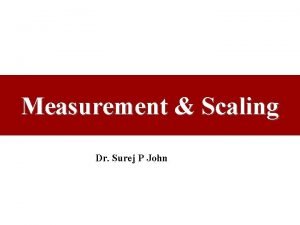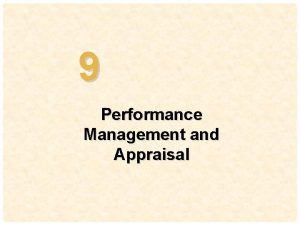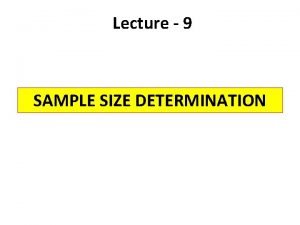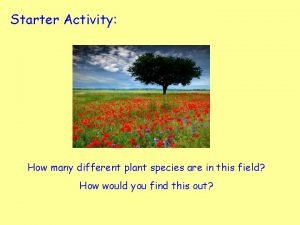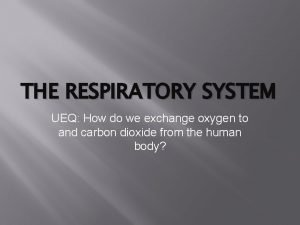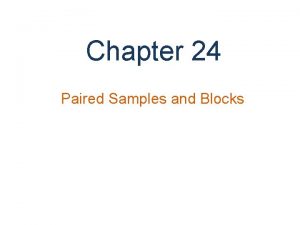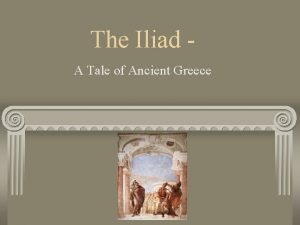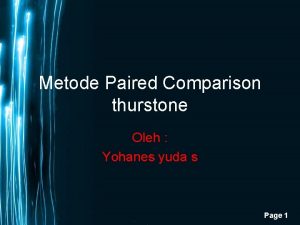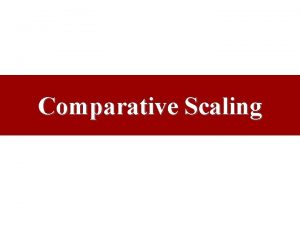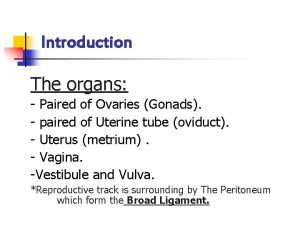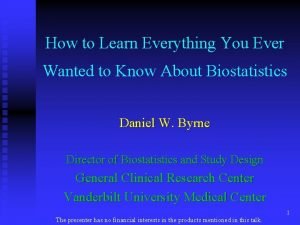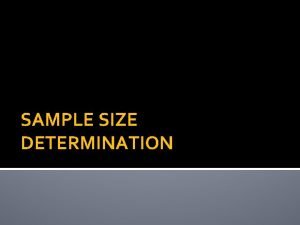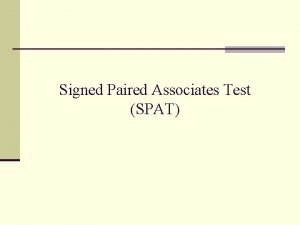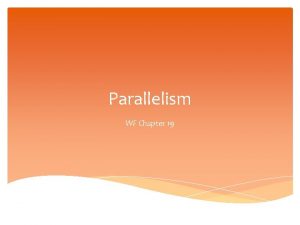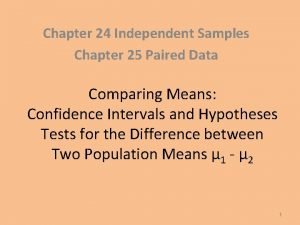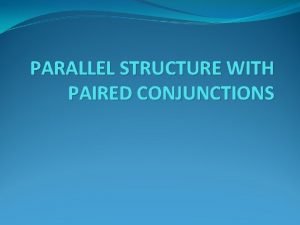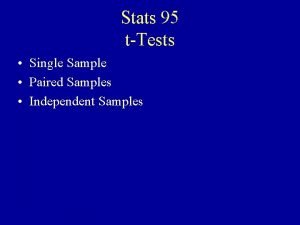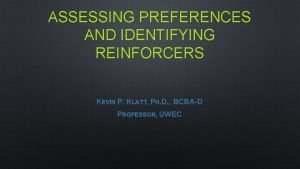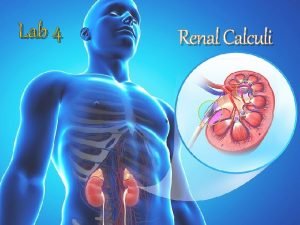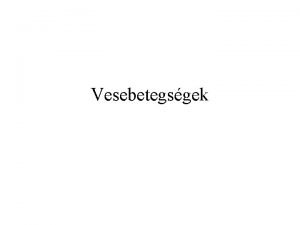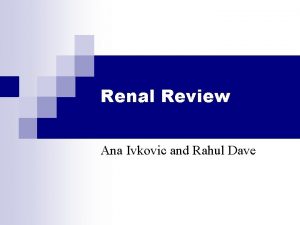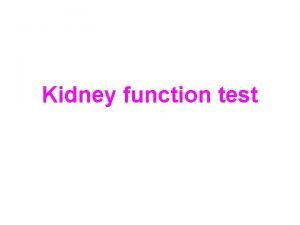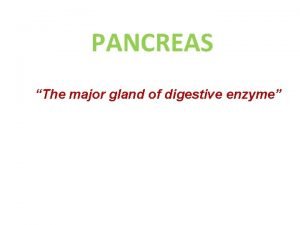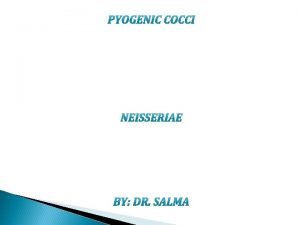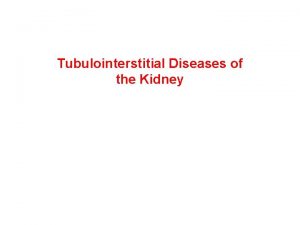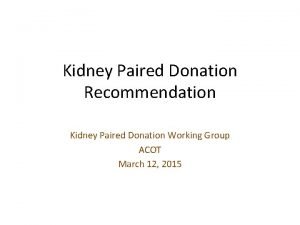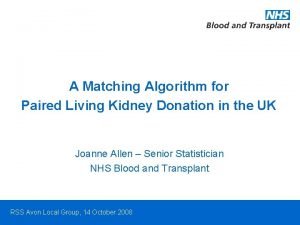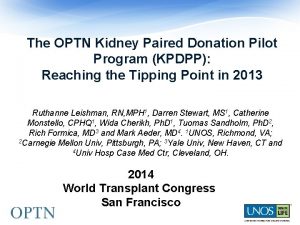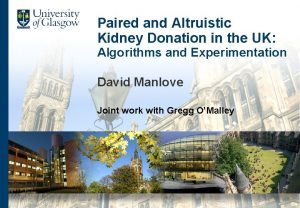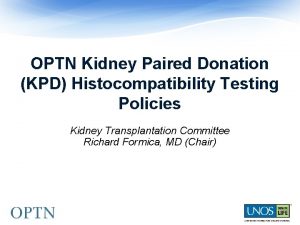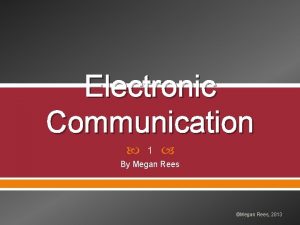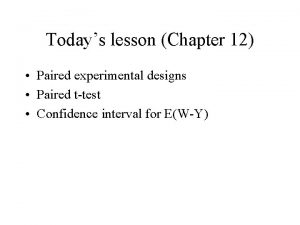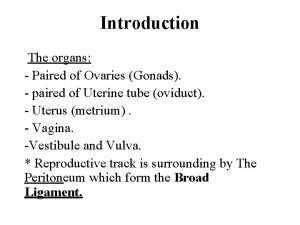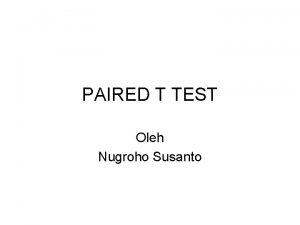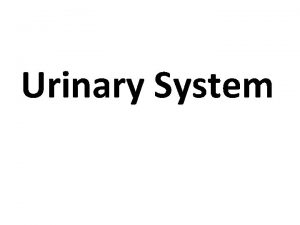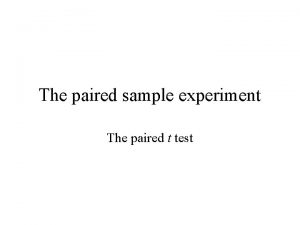Kidney Paired Donation Michael A Rees M D













































































- Slides: 77

Kidney Paired Donation Michael A. Rees, M. D. , Ph. D.

Ohio Solid Organ Transplantation Consortium OSOTC - Audrey B. Bohnengel, Ph. D. Children’s Hospital Cincinnati - Maria H. Alonso, M. D. Cleveland Clinic - David Goldfarb, M. D. Ohio State University - Mitchell L. Henry, M. D. Miami Valley Hospital - Scott Johnson, M. D. University Hospital Cleveland - Mark Aeder, M. D. University of Cincinnati - E. Steve Woodle, M. D. Akron City Hospital (Summa) - Tanmay Lal, M. D. Anchor Enterprises - Alan Rees University of Cincinnati - Johnathan Kopke

Other Contributors Harvard - Alvin Roth, Ph. D. Boston College - Tayfun Sönmez, Ph. D. University of Pittsburgh - Utku Ünver, Ph. D. Carnegie Mellon University - Tuomas Sandholm, Ph. D. Carnegie Mellon University – David Abraham, B. S. Johns Hopkins University - Robert Montgomery, M. D, D. Phil. Johns Hopkins University - Dorry Segev, M. D. Johns Hopkins University - Sommer Gentry, Ph. D. Columbia University - Lloyd Ratner, M. D. Massachusetts General Hospital - Frank Delmonico, M. D. University of North Carolina - Ken Andreoni, M. D.

A Kidney Paired Donation Donor A X Recipient A Donor B X Recipient B

A Paired Kidney Donation

Strategy • 100 donor - recipient pairs generates 4, 950 potential paired exchanges.

Potential Donations = n(n-1)/2

Number of Pairs Required

Registrations per prior LRDs R = 0. 114

Point System Category 1. 2. 3. 4. 5. 6. 7. 8. 9. Wait time Distance Recipient vs. Donor Age Disparity Donor vs. Donor Age Disparity HLA Match Pediatric Bonus PRA Bonus CMV/EBV Bonus Blood Group A/B Bonus Points 3+ 5/2 3 2 6/2 6 6 2/2 6





Data Entry Screens

Medical Reviewer Screens


All medically feasible matches from 41 pairs

Optimizing matching of 8 pairs

Number of transplants versus quality of the match 4 matches - 50 points 3 matches - 60 points

2 -way Solution 60 61 62 63 64 65 1 2 3 4 5 6 7 59 8 58 9 57 10 56 11 12 55 13 54 14 53 15 52 16 51 17 50 18 49 18 48 19 47 20 46 21 45 22 44 23 43 24 42 25 41 26 40 39 27 38 37 36 35 34 33 32 31 30 29 28

3 -way Solution 60 61 62 63 64 65 1 2 3 4 5 6 7 59 8 58 9 57 10 56 11 12 55 13 54 14 53 15 52 16 51 17 50 18 49 18 48 19 47 20 46 21 45 22 44 23 43 24 42 25 41 26 40 39 27 38 37 36 35 34 33 32 31 30 29 28

4 -way Solution 60 61 62 63 64 65 1 2 3 4 5 6 7 59 8 58 9 57 10 56 11 12 55 13 54 14 53 15 52 16 51 17 50 18 49 18 48 19 47 20 46 21 45 22 44 23 43 24 42 25 41 26 40 39 27 38 37 36 35 34 33 32 31 30 29 28

Multiple Approach Solution 60 61 62 63 64 65 1 2 3 4 5 6 7 59 8 58 9 57 10 56 11 12 55 13 54 14 53 15 52 16 51 17 50 18 49 18 48 19 47 20 46 21 45 22 44 23 43 24 42 25 41 26 40 39 27 38 37 36 35 34 33 32 31 30 29 28

Overall Crossmatches to perform 60 61 62 63 64 65 1 2 3 4 5 6 7 59 8 58 9 57 10 56 11 12 55 13 54 14 53 15 52 16 51 17 50 18 49 18 48 19 47 20 46 21 45 22 44 23 43 24 42 25 41 26 40 39 27 38 37 36 35 34 33 32 31 30 29 28

With 3 x-matches positive 60 61 62 63 64 65 1 2 3 4 5 6 7 59 8 58 9 57 10 56 11 12 55 13 54 14 53 15 52 16 51 17 50 18 49 18 48 19 47 20 46 21 45 22 44 23 43 24 42 25 41 26 40 39 27 38 37 36 35 34 33 32 31 30 29 28

All but one 2 -way match lost 60 61 62 63 64 65 1 2 3 4 5 6 7 59 8 58 9 57 10 56 11 12 55 13 54 14 53 15 52 16 51 17 50 18 49 18 48 19 47 20 46 21 45 22 44 23 43 24 42 25 41 26 40 39 27 38 37 36 35 34 33 32 31 30 29 28

Results to Date • The Alliance for Paired Donation incorporated in August 2006 and began enrolling transplant centers in October 2006. • Currently over 70 transplant programs in 24 states participate and over 30 more are considering partnering with the APD. • Since March 2007, the APD has performed 32 paired donation transplants with 2 more scheduled. • In the January match run there were 145 pairs and we have found potential matches for 22 patients involving 12 transplant centers.

Results to Date • Registered pairs ABOi = 60% , 40% crossmatch incompatible. • Registered candidates: PRA 80 -100 % in 36%, 10 -79% in 32 % and <10% in 29% • First 32 transplant recipients PRA 80 -100 % in 22%, 50 -79% in 19%, 25 -49% in 22% and <25% in 38%. • Overall, 41% of the transplanted recipients had a PRA > 50%. • Registered candidates blood type: O in 53%, A in 25 %, B in 18% and AB in 4%. • First 32 transplant recipients blood type: O in 38%, A in 41 %, B in 19% and AB in 3%. • Donor blood type was O in 38%, A in 41%, B in 14% and AB in 8% of the first 32 donors.

The Never-Ending Altruistic Donor Michael A. Rees, M. D. , Ph. D.

Paired Donation: Incompatible but willing living donors

The square cannot give to the circle

The circle cannot give to the square

Paired Donation: The square gives to the square, the circle to the circle

What if not done simultaneously?

Reneging is possible – with loss of the “bargaining chip” of the incompatible donor’s kidney

Common Situation: Not Reciprocal incompatibility

Altruistic Donor Chain

What if not done simultaneously?

Reneging is possible – but the “bargaining chip” of the incompatible donor’s kidney is not lost. Therefore simultaneous procedures are NOT required.

Simultaneous Altruistic Donor Chain Deceased Donor Waiting List

Never-ending Altruistic Donor Start a new Altruistic Chain

Never-ending Altruistic Donor continues

Never-ending Altruistic Donor continues

Never-ending Altruistic Donor

The First Never-Ending Altruistic Donor Chain

Optimizing NEAD chain matching 1 14 2 3 13 4 12 5 11 6 10 9 8 7 Each circle represents an incompatible donor/recipient pair

Who can donor 1 give to? 1 14 2 3 13 4 12 5 11 6 10 9 8 7

Who can donor 1 give to? 1 14 2 3 13 4 12 5 11 6 10 9 8 7

Who can donor 1 give to? 1 14 2 3 13 4 12 5 11 6 10 9 8 7

Who can donor 1 give to? 1 14 2 3 13 4 12 5 11 6 10 9 8 7

Who can donor 1 give to? 1 14 2 1 st 13 3 4 12 5 11 6 10 9 8 7

Who can donor 1 give to? 1 14 2 1 st 13 3 4 2 nd 12 5 11 6 10 9 8 7

Who can donor 1 give to? 1 2 14 1 st 13 3 4 2 nd 12 5 3 rd 11 6 10 9 8 7

Who can donor 1 give to? 1 2 14 1 st 13 3 4 th 4 2 nd 12 5 3 rd 11 6 10 9 8 7

Only pair 4 can give back 1 14 2 3 13 4 12 5 11 6 10 9 8 7

Can we do better? 1 2 14 1 st 13 3 4 th 4 2 nd 12 5 3 rd 11 6 10 9 8 7

All possible matches for pair 4 1 14 2 3 13 4 12 5 11 6 10 9 8 7

All possible matches for pair 4 1 14 2 3 13 4 12 5 11 6 10 9 8 7

All possible matches for pair 4 1 14 2 3 13 4 12 5 11 6 10 9 8 7

All possible matches for pair 4 1 14 2 3 13 4 12 5 11 6 10 9 8 7

All possible matches for pair 4 1 14 2 3 13 4 12 5 11 1 st 10 9 8 7 6

All possible matches for pair 4 1 14 2 3 13 4 12 5 11 2 nd 1 st 10 9 8 7 6

All possible matches for pair 4 1 14 2 3 13 4 12 3 rd 5 11 2 nd 1 st 10 9 8 7 6

All possible matches for pair 4 1 2 14 4 th 13 3 4 12 3 rd 5 11 2 nd 1 st 10 9 8 7 6

The 4 th best choice for both 1 14 2 4 th 13 3 4 th 4 12 5 11 6 10 9 8 7

Optimizing NEAD chain matching Each circle represents an incompatible donor/recipient pair 1 14 2 3 13 4 12 5 11 6 10 9 8 7

Imagine that an altruistic donor gives to pair one AD 1 14 2 3 13 4 12 5 11 6 10 9 8 7

Pair one’s donor converted to an “altruistic donor” AD AD 1 14 2 3 13 4 12 5 11 6 10 9 8 7

Pair one has four possible choices AD AD 1 2 14 1 st 13 3 4 th 4 2 nd 12 5 3 rd 11 6 10 9 8 7

Pair one’s converted “altruistic donor” can now give to pair 12 AD AD 1 14 2 3 1 st 13 4 12 5 11 6 10 9 8 7

Pair twelve’s donor converted to an “altruistic donor” AD AD 1 14 2 3 1 st 13 4 12 AD 5 11 6 10 9 8 7

Pair twelve’s donor gives to the best possible match AD AD 1 14 2 3 1 st 13 4 12 AD 5 11 1 st 6 10 9 8 7

Pair eight’s donor converted to an “altruistic donor” AD AD 1 14 2 3 1 st 13 4 12 AD 5 11 1 st 6 10 9 8 AD 7

NEAD chain matching improves both quantity AND quality of matches AD AD 1 14 2 3 1 st 13 4 1 st 12 AD 5 11 1 st 6 10 9 8 AD 7

Our Second NEAD chain

3 states, 3 time zones, 3 transplants
 Michael rees net worth
Michael rees net worth Elin rees
Elin rees Rees ecker solution
Rees ecker solution Peter rees facebook
Peter rees facebook Mapleson f
Mapleson f Andrea rees davies
Andrea rees davies Gymnasium rees
Gymnasium rees Rees and ecker method principle
Rees and ecker method principle Dr megan rees
Dr megan rees Peter rees jones
Peter rees jones Akshaya patra donation online
Akshaya patra donation online Blood donation process flow chart
Blood donation process flow chart Everyday hero donation
Everyday hero donation Xilinx university program
Xilinx university program Ovidrel injection
Ovidrel injection Sperm donation greensboro nc
Sperm donation greensboro nc Example of income and expenditure account
Example of income and expenditure account Definition of w h o
Definition of w h o Pintos priority scheduling
Pintos priority scheduling Conclusion for blood donation project
Conclusion for blood donation project Blood donation definition
Blood donation definition Vedmata gayatri trust donation
Vedmata gayatri trust donation Dkms americas
Dkms americas Utilitarianism organ donation
Utilitarianism organ donation Disadvantage of organ donation
Disadvantage of organ donation Donation committee
Donation committee Unilatral
Unilatral Pintos priority donation solution
Pintos priority donation solution Blood donation disqualifications
Blood donation disqualifications Goal2u
Goal2u Language
Language Paired statement keys
Paired statement keys Paired vs unpaired t test
Paired vs unpaired t test Soft paired cone shaped organs
Soft paired cone shaped organs Chapter 25 paired samples and blocks
Chapter 25 paired samples and blocks Spotlight on paired passages
Spotlight on paired passages Paired conjunctions examples
Paired conjunctions examples Medial intermuscular septum upper arm
Medial intermuscular septum upper arm Paired metamorphic belt
Paired metamorphic belt Difference between a paired and unpaired t test
Difference between a paired and unpaired t test Paired t-test ppt
Paired t-test ppt Coordinating conjunction.
Coordinating conjunction. Types of appraisal methods in hrm
Types of appraisal methods in hrm Parallel structure with paired conjunctions
Parallel structure with paired conjunctions Unclear standards in performance appraisal
Unclear standards in performance appraisal During the precambrian period toefl
During the precambrian period toefl Paired data sets
Paired data sets Comparative scale example
Comparative scale example Paired statement keys
Paired statement keys Satisfactory promotable
Satisfactory promotable Sample size
Sample size Starter activity ideas
Starter activity ideas Paired writing
Paired writing Soft paired cone shaped organs
Soft paired cone shaped organs Ap stats chapter 24 paired samples and blocks
Ap stats chapter 24 paired samples and blocks Paired comparison method of performance appraisal
Paired comparison method of performance appraisal Why was achilles almost-undefeatable?
Why was achilles almost-undefeatable? Metode paired comparison
Metode paired comparison Paired comparison scale
Paired comparison scale Contoh soal dan jawaban uji tanda
Contoh soal dan jawaban uji tanda Lymphatic drainage of vulva
Lymphatic drainage of vulva A
A Paired t-test formula
Paired t-test formula Spat test
Spat test Chapter 19 matching words with definitions
Chapter 19 matching words with definitions Chapter 24 paired samples and blocks
Chapter 24 paired samples and blocks Use parallel structure with paired conjunctions
Use parallel structure with paired conjunctions Pared t test
Pared t test Paired stimulus preference assessment data sheet
Paired stimulus preference assessment data sheet Vasa recta vs peritubular capillaries
Vasa recta vs peritubular capillaries What does a kidney stone look like
What does a kidney stone look like Nemo ckd
Nemo ckd Insuff renalis chr
Insuff renalis chr Sglt1
Sglt1 Function of kidney
Function of kidney Structure of posterior pituitary gland
Structure of posterior pituitary gland Cocciare
Cocciare Medulla kidney
Medulla kidney

